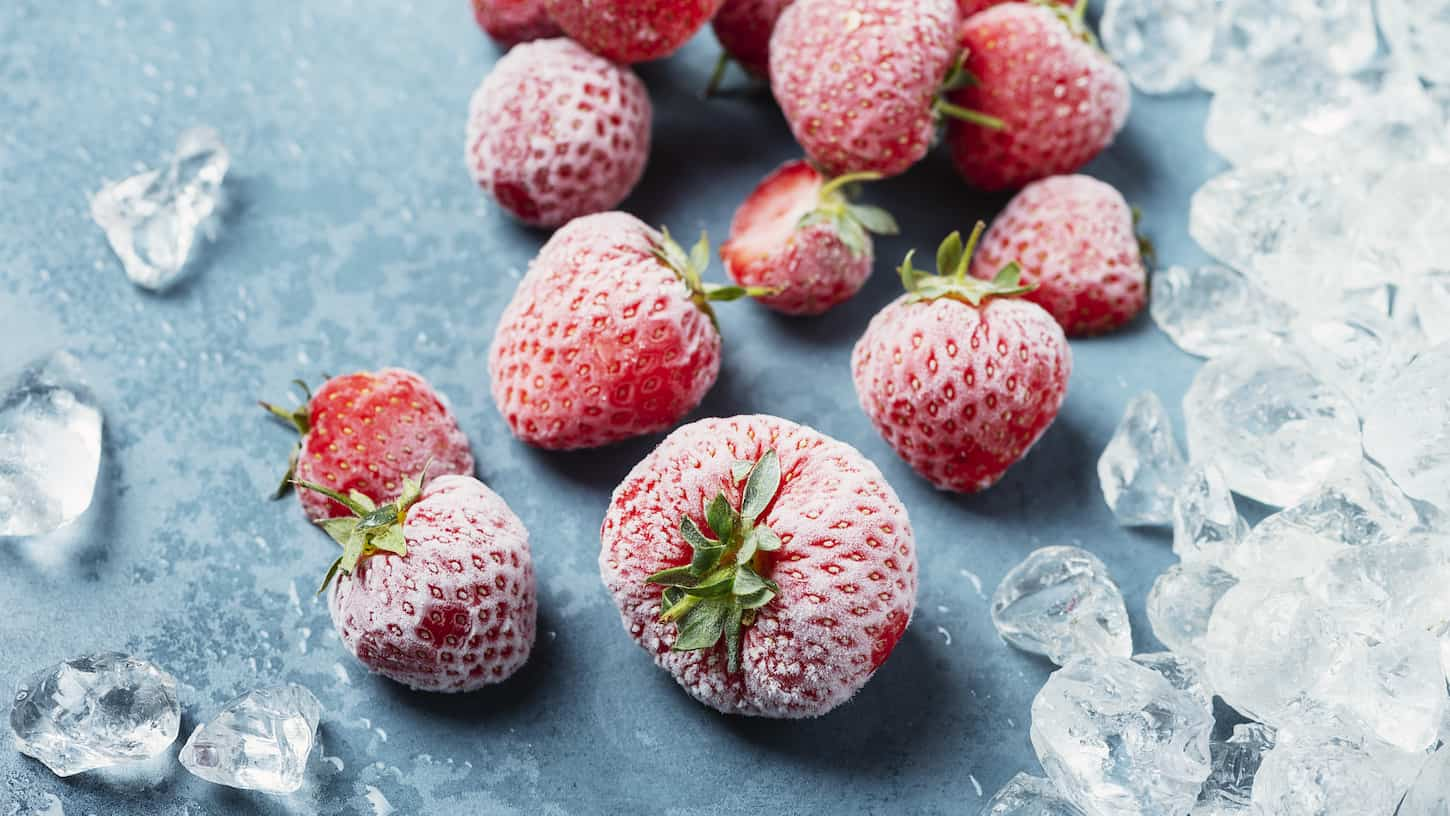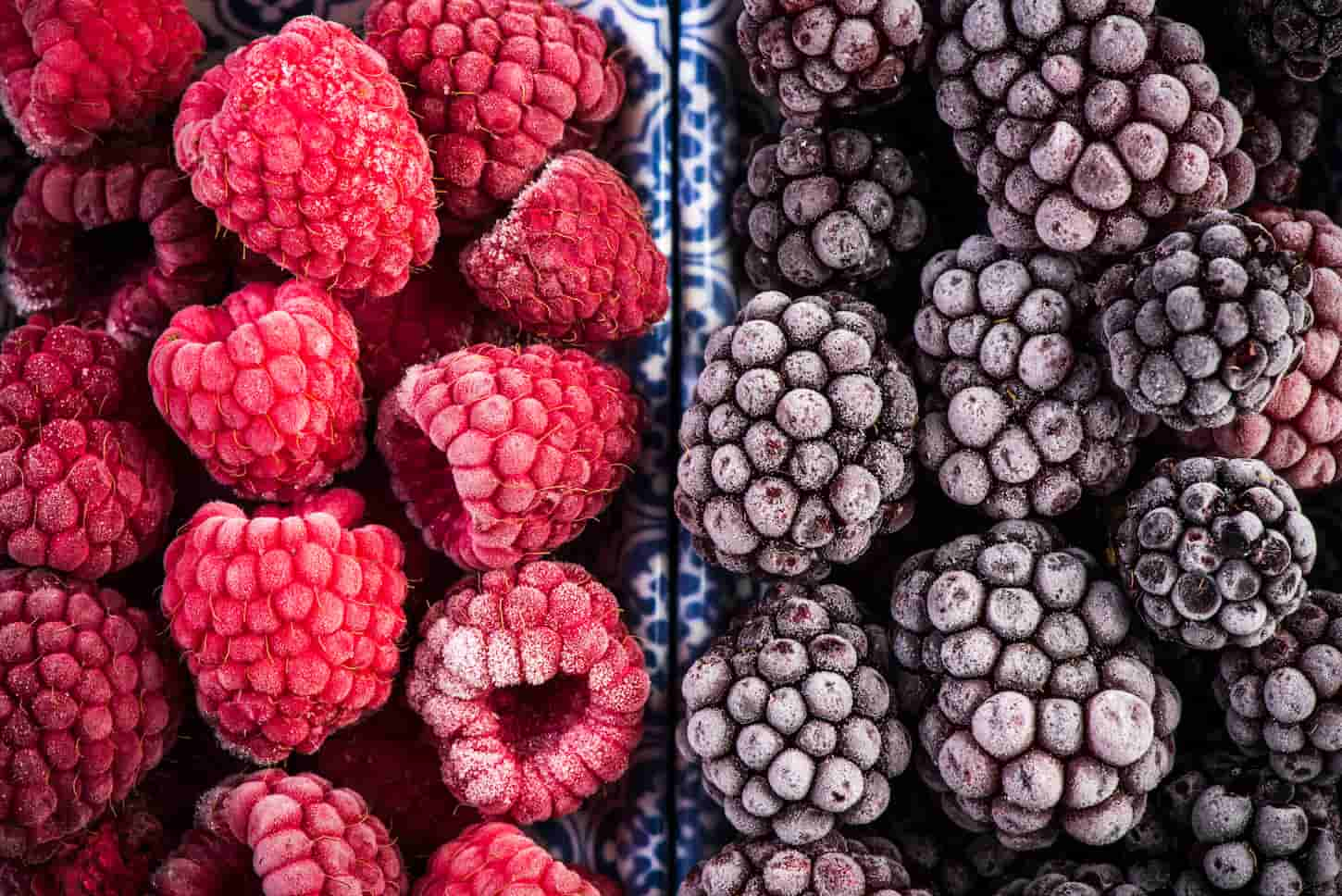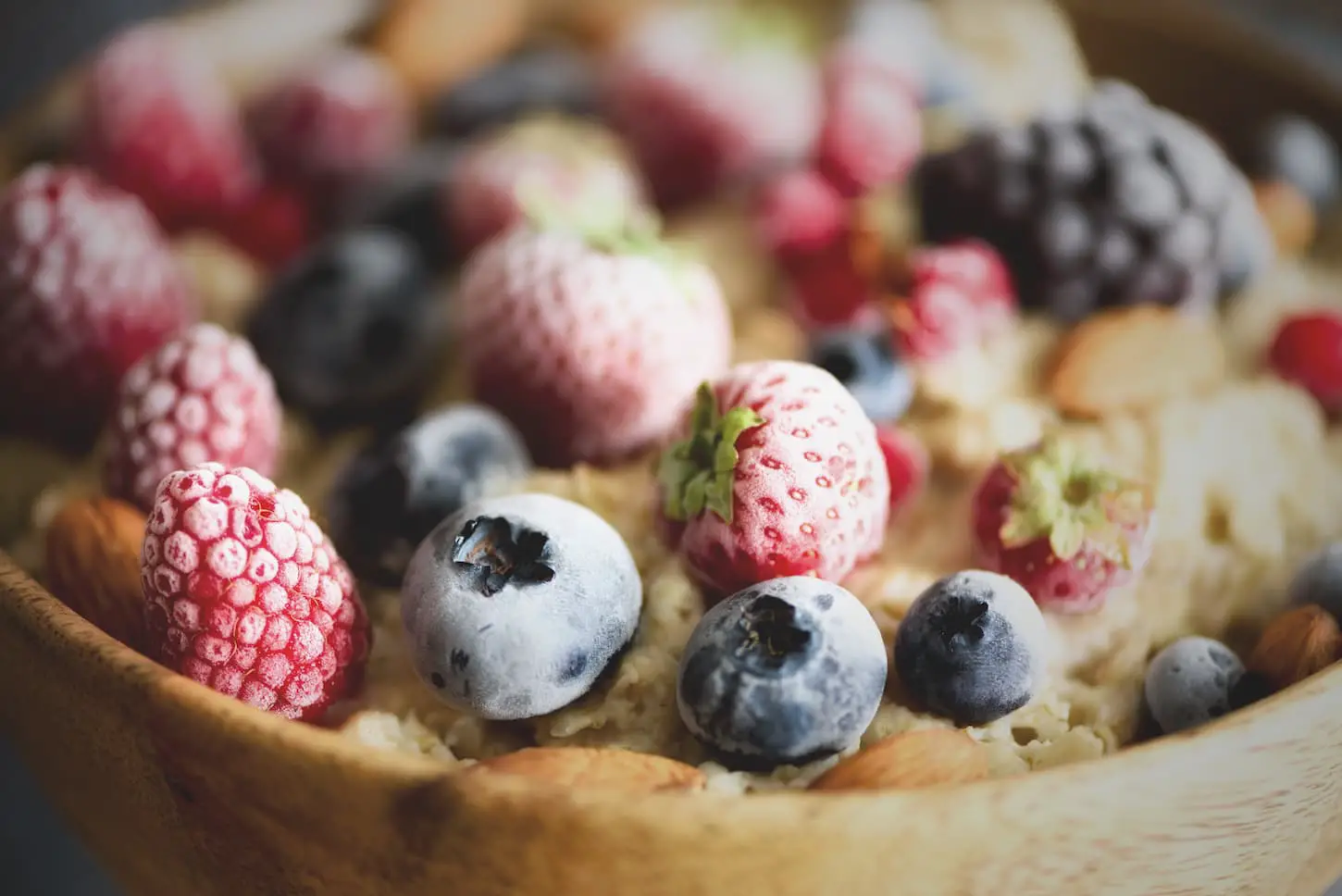Freeze-drying, also known as lyophilization is one of the safest and healthiest methods of food preservation used today. It locks in 97% of your food’s nutritional value, it is way easier than dehydrating or canning, and it extends the shelf life of your food considerably.
Freeze-drying foods don’t kill most bacteria or viruses, though many become dormant during the freeze-drying and storage process. Freeze-drying also does the least amount of damage to most nutrients and enzymes in foods when compared to other food storage methods.
Freeze-drying is a low-temperature dehydration process that takes place through three interdependent and distinct stages – namely freezing, sublimation, and desorption. Translation: freeze-drying happens when moisture is removed from a frozen food item, in a way that the ice changes from its solid state to vapor without being liquefied. In any case, let’s talk more about freeze-drying, bacterium, viruses, nutrients, enzymes, and all the things.

Does Freeze-Drying Kill Pathogens (The Bad Stuff That Makes Us Sick)?
Freeze-drying does not destroy nor kill pathogens (pathogens are biological agents or microorganisms that cause disease or illness and include bacteria, viruses, and fungi). Freeze-drying foods slows down microbial activity in foods, but it does little destruction to viable organisms.
A small percentage of bacteria can be eliminated through freeze-drying. Common foodborne pathogens such as salmonella, E. coli, giardia, and norovirus cannot be easily destroyed through freeze-drying but can be rendered dormant.
The reason that freeze-drying doesn’t do major damage to pathogens is this: the pathogens go dormant when they aren’t in the “danger zone” when they spread quickly on food. And now that your food is shelf-stable, those pathogens should remain dormant as long as the food isn’t reconstituted in water and/or stays in an environment where there’s limited oxygen.
So as long as your freeze-dried food stays good in a Mylar bag (or a glass jar) with an oxygen absorber? Then it’s most likely that those pathogens (usually bacteria) won’t make any progress towards making your food so full of germs that you get sick.
But once you add water and oxygen? Those pathogens become activated – and you’ve got to beware of the danger zone of food-borne illnesses.
Does Freeze-Drying Kill Parasites?
Freeze-drying foods that have parasites might destroy some kinds of parasites (parasites in food may include helminths and many species of protozoa), as parasites can be destroyed by being frozen at specific freezing temperatures for a minimum amount of time. However, heat is a better method to kill food-borne parasites.
One fact you should know about parasites in or on preserved foods is that they do not replicate or grow as pathogens do, so you can rest assured that food deterioration would be at the barest minimum.
Now here’s the thing to remember about freeze-drying food as a method to destroy parasites.
Destroying parasites through freeze-drying is tricky because there isn’t a universally approved way or method to do so.
The efficacy of killing parasites through freeze-drying depends on the species of the parasite, the stage of development it’s at, and certain time conditions. In other words, there’s a lot of room for error.
Pro tip: freeze-drying parasites shouldn’t be your go-to method for removing parasites from food.
Some research papers say that subjecting parasites in or on the food of animal origin to a freezing temperature of 5 degrees Fahrenheit (-21℃) for a duration of 1 -7 days would definitely inactivate them, but this isn’t really applicable in at-home freeze-drying situations.
On the other hand, parasites can be effectively destroyed when cooked at a core temperature of 140-167 degrees Fahrenheit (60 – 75℃) for at least 15 – 30 minutes.
What’s The Best Way to Keep Freeze-Dried Foods Safe from Pathogens?
Despite the hindering effects freeze-drying has on pathogens, new microbial activity can still be introduced. Keeping freeze-dried foods safe from pathogens can be as simple as storing them in airtight containers, vacuum-sealed bags, or mylar jars with oxygen absorbers in a cool, dark environment.
Once the food is freeze-dried, it becomes hygroscopic (it absorbs water from the air) and fragile. This is why you’ve got to use oxygen absorbers in your storage containers – and keep your freeze-dried foods away from humid environments.
It’s also why we use Ziploc bags to “test” newly freeze-dried foods for moisture damage before sealing them in Mylar bags (or mason jars) for long-term storage.
But it’s also important to look at how you handle your food before you freeze-dry it. Make sure you’re using good food handling techniques, cleaning foods properly, and avoiding cross-contamination at all costs.
That way, you can know that your freeze-dried food is safe to eat – and you can be doubly certain it’s safe by cooking it properly (to safe temperatures that will kill possible pathogens and parasites) when you cook your meal later.

Does Freeze-Drying Foods Kill Nutrients (the Good Stuff We Need)?
Freeze-dried foods retain up to a whopping 97% of the original nutritional value of your food. Generally, the 3% of nutrients that are lost consists majorly of vitamins like vitamins A and C.
However, food preparation methods such as blanching can cause higher nutrient loss than freeze-drying. Or if you’re blanching your foods before freeze-drying? Then you’ll have all the nutrient loss associated with blanching – plus the 3% or so of nutrient loss related to freeze-drying.
So if you’re worried about losing nutrients, make sure you stick to freeze-drying fresh food. Or make sure you read this article where I compare how freeze-dried foods’ nutrients stack up to their fresh counterparts. Click here to give it a read: Are Freeze-Dried Foods Just as Nutritious? Let’s See!
Does Freeze-Drying Foods Kill Enzymes?
Freeze drying generally only slows down enzymes (substances found in living organisms that catalyze various biochemical reactions like maturation and ripening). Some enzymes can be destroyed by preparing the food previous to freeze-drying if desired.
Enzymes aren’t usually destroyed by freeze-drying. They can continue well after the life of a plant or animal has ended (due to slaughter or harvest). The first stage of freeze-drying, which is freezing, decelerates the deteriorative activities of enzymes in food, especially in plants.
Now, keep in mind that the reaction of these enzymes may result in unpleasant texture changes, flavor, and color in slaughtered animals or harvested crops. So sometimes you do want these enzymes to be destroyed.
Blanching and adding chemical compounds make it possible to stop enzyme activity before freezing. Here’s all you need to know about these methods of food preparation in order to stop various enzyme activities.
Blanching
Blanching entails placing vegetables or fruits in boiling water or steam for a brief time interval, then cooling them rapidly in cold water.
Blanching inactivates the enzymatic reactions in fruits and vegetables. It also helps eliminate various microorganisms that could be on their surfaces.
Please note that blanching time frames vary from vegetable to vegetable and over-blanching results in excessive loss of food nutrients, flavor, and color. Below you will find a table of vegetables and their general recommended blanching timeframes.
| Vegetables | Blanching Time Intervals |
|---|---|
| Broccoli | 2-3 minutes |
| Lettuce | Just a minute |
| Celery | 2-3 minutes |
| Spinach | About 40 seconds |
| Cabbage | 3-5 minutes |
| Cauliflower | 5 minutes |
| Asparagus | 3-4 minutes |
| Corn | 6-10 minutes |
| Green Beans | 3-5 minutes |
If you’re going to blanch most fruits (usually to remove the skins or peels), then the timeframe you’re looking for is usually less than a minute – or until the skin looks loose enough to remove.
Adding Chemical Compounds
The activities of enzymes in fruits can cause a loss of vitamin c and browning, so the second way you can stop blanching is by adding chemical compounds such as ascorbic or citric acid to your food.
You can either add ascorbic acid to your fruits in their pure form or in the form of processed mixtures sold commercially. Many canning companies sell specific blends marketed to prevent the browning of canned foods – that mix works well for freeze-drying, too.
Ingredients like sugar and lemon juice can also help with preventing browning in fruits and vegetables, but please note that lemon juice can only slow down browning for a short while, so sugar is usually the better option if you only have these two ingredients while canning.
That being said, sugar makes freeze-drying harder. So if you’re wanting to prevent browning while freeze-drying, a little bit of lemon juice goes a long way – and no sugar is needed. Just make sure you keep the food out of the air as much as possible.
Pro tip: a tiny bit of lemon juice is a great way to prevent enzyme-related browning of fruits while freeze-drying, but even that’s not needed if you pre-freeze sliced fruits and immediately move them to a freeze-dryer.
Does Freeze-Drying Foods Kill Probiotics?
Freeze-drying foods with probiotics will not destroy the healthy bacteria and yeasts, but it will temporarily arrest their growth. Probiotics are live bacteria and yeasts that are good for your digestive system, so these are not the types of microorganisms you want to be killed.
I’m sure you’re wondering if it’s possible to freeze-dry probiotic foods and the answer is a resounding yes. This is honestly one of the best parts about freeze-drying.
This food preservation method can preserve food items that other preservation methods cannot. Most dairy or egg products and surprisingly drinks can be freeze-dried, so feel free to experiment with your kombucha, yogurt, kefir, and pretty much any other probiotic food item you like.
Pro tip: freeze-dried yogurt drops (flavored or plain) are pretty much like candy and are delicious.
Some foods take longer to freeze-dry than others, while the makeup of some can bring about unpleasant textures and tastes – both to themselves and whatever else you’re freeze-drying at the same time.
That’s why you’ll want to experiment when using a freeze-dryer because there is no fixed way of using it to process food. It really is best described as a scientific art.
Are There Foods That Don’t Do Well in The Freeze Dryer?
Oily or fatty foods, meats with bone in them, chocolate, and sugar-heavy foods tend not to do well in a freeze-dryer. That being said, foods with some amounts of any of those ingredients (except bone) may be freeze-dried for shorter-term storage just fine.
I’ve found that meat products that are shredded, diced or ground aren’t so bad when freeze-dried. Candy does surprisingly well, despite it being just sugar.
It’s a lot of fun to experiment with what works – and what doesn’t. But if you’d like to save time, make sure you check my list of 77 Foods You Can Freeze Dry and 17 You Cannot: Complete Guide. It’ll seriously save you some headaches.
As you experiment with several other food items, you get to know what works and what doesn’t so it’s important you take notes, and also do a lot of research to save you from making some horrible freeze-drying mistakes.

Freeze Drying Mistakes You Should Avoid (to keep your food safe)
I have compiled a couple of freeze-drying mistakes you should avoid. Taking note of them would make navigating your freeze-dryer experience much less challenging. And it should help your foods stay safer for food storage, too.
Mistake #1: Crowding your freeze dryer
Even a freeze-dryer has a max capacity for food. It’s a bad idea to overload your freeze-dryer with food.
I know you might think doing this will save you a lot of time, but there’s a high chance it would result in the exact opposite scenario of taking you more time to freeze-dry the load.
An overloaded freeze-dryer would absorb moisture way above its capacity. This would lead to it forming too much ice and being unable to complete a drying cycle.
You would then have to empty your freeze dryer, place all the food items in the freezer, wait for the unit to defrost, and then start the process all over again.
If you load your freeze dryer properly, you don’t have to experience this hassle.
Mistake #2: Freeze-drying foods without a liner in the pan
Putting liners in the stainless-steel pans of your food dryer makes offloading the freeze-dried super easy. If you don’t use a liner, you’ll have to pry your freeze-dried goodies off the pan almost all the time.
Plus, leaving them to sit there until they are warm enough to pick off the pan with ease isn’t a great idea either because, at that stage, they are hygroscopic (meaning they can absorb moisture from the air and become soggy).
Pro tip: Use a liner – and end every cycle on a warming phase.
Reusable parchment paper and silicone mats are the best materials for lining the pans in your freeze-dryer.
Mistake #3: Expecting Foods to freeze-dry fast in hot weather
Freeze dryers don’t work better in hot weather. In fact, the higher the surrounding temperature, the longer your food items would have to sit in the freeze-dyer. Freezing your food takes time – and it takes longer when it’s hot out.
If the weather condition is usually hot where you live, make sure you set up your freeze dryer in an air-conditioned space to save you the stress of waiting additional hours for your foods to be processed.
Mistake #4: Arranging foods unevenly and mixing food sizes
When loading food into your freeze-dryer, make sure the chunks are uniform and evenly distributed. This helps your freeze-dryer finish all the food at the same time.
If you can’t be bothered? Well, then you will have a case where the smaller food chunks are properly freeze-dried and the bigger ones are not completely dry. They may even be cold in the middle.
You should also avoid layering food if you want an even freeze-drying process. You won’t have to deal with cold spots and uneven drying time if you cut your food up into small and equal pieces and evenly distribute them in the freeze dryer.
Pro tip: you can layer foods if you use mats. Just be sure to layer them evenly and uniformly – and to cut the pieces uniformly, too. Mats that allow for better airflow work best for layering.
Mistake #5: Freeze Drying Fruits with Tough Skin
Food items like blueberries, grapes, cherry tomatoes, and cranberries have tough skin and will take an inordinate amount of time to freeze-dry due to this fact.
However, if you apply the right food preparation techniques before freeze-drying, you can save yourself a lot of time.
You can slice the fruits in half to enable easy moisture absorption or you can gently poke holes in them before tossing them in the freeze dryer. You can freeze your cranberries and blueberries up and then briefly prep them in a food processor.
Pro tip: layer all the fruit on a flat plate in a single layer. Put another plate on top of them. Now use a knife to evenly and uniformly slice all the fruit right in half.
That trick has saved my grapes and berries on so many occasions, so you’re welcome.
Mistake #6: Do NOT use your freeze-drier below freezing temperatures
Operating your freeze dryer when it’s below freezing around your unit can destroy your compressor.
So if it’s too cold to think properly? Don’t be thinking about freeze-drying foods. Go get warm first. And save freeze-drying for when you (and your unit) aren’t freezing.
Final Thoughts
Freeze-drying is literally the best thing that happened to the world of food processing, and we really hope you found this article insightful and helpful. If you’re looking to get a freeze dryer or already have one it’s important you know way more than the basics but the in-depth effects freeze-drying has on your food items.
Of all the drying methods, freeze-drying is undeniably the best, plus the whole experience of getting to taste advanced flavors and textures makes it all the more interesting. There’s by far a lot more to freeze-drying than we talked about here so if your interest is piqued you should definitely check out our other articles on freeze-drying.
And the best place to go next is right here: How Much It Costs To Run A Freeze Dryer: The Complete Guide. That way, you’ll know exactly how much to expect your freeze-dryer to cost to run a load – from start to finish to the food stored away.
Resources
Learning from your own experience is essential, but learning from others is also intelligent. These are the sources used in this article and our research to be more informed as homesteaders.
- “Dried Foods.” Dried Foods – an Overview | ScienceDirect Topics, www.sciencedirect.com/topics/agricultural-and-biological-sciences/dried-foods.
- Franssen, Frits, et al. “Inactivation of Parasite Transmission Stages: Efficacy of Treatments on Food of Animal Origin.” Trends in Food Science & Technology, Elsevier, 9 Nov. 2018, www.sciencedirect.com/science/article/pii/S0924224418301560.
